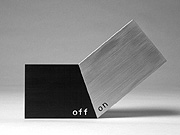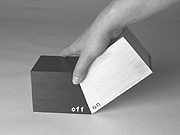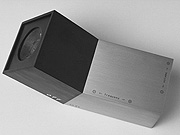Locating video content on the Web can be cumbersome and time-consuming. Now a new software application combining BitTorrent and RSS could makes it easier for nontechnical users to locate video files and download them to their computers, Wired News has reported.
Sajeeth Cherian, a 20-year-old communications engineering student at Carleton University in Ottawa, Canada, got the idea for the application, called Videora, after observing the trouble his roommate went through to find and download a file off the internet. He thought there ought to be an easier way.
BitTorrent is a peer-to-peer file-sharing application that enables fast downloads of large data files. When a person downloads a video, for instance, the data arrives in chunks from different users, resulting in a faster download. Really Simple Syndication (RSS) is a mechanism used by sites to automatically distribute their content — like headlines, links or video — to subscribers’ computers. RSS subscribers choose what kind of information they would like to receive.
Videora puts together an easy-to-use interface so users don’t have to worry about such details. Once a person downloads the application, the program automatically installs BitTorrent and downloads the RSS feeds. Then, users simply type in the title or keyword for a “series” they want to record, like amateur tsunami videos, for instance.
The request can be added to a “want list,” and the user can download any tsunami videos located by double-clicking the file. Or, a person can add the tsunami request to “season tickets” and the program will automatically download any tsunami video.
Cherian said they extract the BitTorrent link from the RSS feed, and if the title matches what you are looking for, it starts downloading the BitTorrent file from the RSS link.
When the search is submitted, the request goes to the open-source Videora server that includes an index of “tracker” websites — which point users to locations where digital music and movie files can be found — with RSS feeds. Anyone can contribute to the database.
Cherian developed the source code and then set it free; he has no control over the content. The site launched at the end of December. Users can download a free trial of the Videora application or pay $23 for a version with additional features.
So what's the best equipment for storytelling, especially if you're in broadcasting? These are the reports on my safaris. Interested in your road-trip experiences too.
Thursday, January 20, 2005
Contributing under cover
PowerPizza is a rather expensive cardboard box designed to hide your laptop....it looks like you're enjoying an Italian pizza, when in fact you're making last minute changes to your article for the BBC Interactive website. Not sure how long it would last in Kabul, but it is a novel idea.
Sunday, January 16, 2005
Tsunami Help Portal for broadcasters
I am coordinating a group of volunteers to organise an overview of how various organisations around the world have reacted to help broadcasters affected by the December 26th Earthquake and Tsunami. We all share the belief that by sharing this information on a new portal, that broadcasters will be stimulated to coordinate their efforts.
Check it out....
Check it out....
Saturday, January 15, 2005



The Mouseradio from Germany is a fully functioning radio without buttons. The idea was to use the mouse navigation and to implement it in a radio.
Moving the radio vertically changes the volume, moving the radio on the horizontal axis changes the frequency being tuned to. The radio is on, when the black speaker points up in the air.
Wednesday, January 12, 2005
Definitely the most exciting flash intro I have seen in a long while....
http://www.webfeatsdesign.com Go for the whizz bang version if you have the (broad)bandwidth
Tuesday, January 11, 2005
MD-21 Anniversary Edition

Apparently the MD-21 is not new...been around since the fifties.

The almost indestructible design of this microphone was impressively demonstrated at the Industrial Fair in Hannover in 1954. "We set up a round wooden board, about 5 feet in diameter, on which we had fitted ramps at regular intervals. An MD 21 suspended on a short cable was placed on the board, which was then rotated quite fast. The microphone was dragged up each ramp and could be seen crashing down onto the board again and again," said Fritz Sennheiser describing the unusual demonstration. "It was sensational - at that time, microphones were delicate objects and had to be handled carefully." And even today, the extremely low percentage of repairs for the MD 21 - 0.4% - speaks for itself.
But even Prof. Dr. Fritz Sennheiser never expected the MD 21 to be such a bestseller for so long. "We started with a completely normal "edition", with production at that time in batches of 500." In the course of its long life, the microphone has undergone only minor modifications, including a change from the gray hammer tone to a black finish. "We also improved the transducer system in accordance with the state of the art, basically involving improvements to the diaphragm. The main issue was - and still is - eliminating partial oscillation in the diaphragm."
To celebrate the birthday of this exceptional microphone, Sennheiser electronic issued a limited edition in a light-gray hammer tone design with the signature of Prof. Dr. Fritz Sennheiser. The birthday edition was limited to 100, and the first three of these, in a special presentation package, were auctioned off in May 2004 for a good cause. Personally, I prefere the black one!
Workhorse for European Radio Reporters

Which mike do I use for audio reporting? This old faithful from Sennheiser, the MD-21. You can drop the thing out of a plane and it will still work. Very insensitve to wind noise and "plopping". Bought one in 1980 and it still sounds "fresh". Note: The Sennheiser website is a strange mix of English and Deutsch at times.

Now for something completely different in microphones

The new Holophone H2-PRO Surround Sound Microphone is the only patented device specifically designed for capturing discrete 5.1, 6.1, and 7.1-channels of surround sound for all professional audio applications. It comes at a professional price too -US $5850.00 - and there's another US$250 needed if you want the optional light-weight hand-grip. I can understand the price for the specialist microphone...but not the 250 bucks for the handle.
The Toronto based company VF Gadgets says its flexibility, ease of use, and performance make the H2-PRO ideal for recording live events and in-studio use. It is well suited for television broadcasters (standard TV, DTV, and HDTV), radio broadcasters, music producers and engineers, film location recording crews, and for independent project studios. All surround sound recordings from the H2-PRO are discrete and in real-time, thereby very easy to bring into any broadcast or studio environment, manipulate, mix and/or encode into any/all of the standard consumer playback formats – Dolby, DTS, and Circle Surround. The H-2 Pro provides engineers and producers total control over all incoming, discrete surround sound audio signals and delivers those signals in an intuitive way.
The Holophone H2-PRO Surround Sound Microphone is entirely compatible with all standard analog and digital I/O devices that accept up to eight channels and provide phantom power including hard disc based recorders, multichannel preamplifiers, standard multichannel I/Os, and all mixing consoles..

Friday, January 07, 2005
CES Show Stealer for Journalists?

The PMA400/430 as seen at CES 2005 in January

Thanks to the Engadget guys who alerted me to the new Archos Pocket Media Assistant PMA430 launched at CES Las Vegas....the real name of what was rumoured to be AV500 at the German CeBIT tech trade show in March 04.
In Europe, the device seems to have the type number PMA400. The new PMA400/430 is a Linux-based portable audio and video player with a 30GB hard drive and an LCD touch screen that also doubles as a PDA. They’ve loaded it up with VERY useful extras: built-in 802.11b WiFi, USB host (for connecting a keyboard or dumping photos from a digital camer), a removeable battery, and support for Mophun and Qtopia games. Because it runs on Linux you can install new applications for the PMA430, and there are plans to introduce an Software Development Kit in February.
More details here.

This was the prototype AV500 shown in March 2004, later renamed the PMA400.

Thursday, January 06, 2005
Wednesday, January 05, 2005
XM Radio - XM Emergency Alert 24/7
XM Radio - XM Emergency Alert 24/7: Interesting development and a great initative by a commercial broadcaster. XM Emergency Alert - XM 247 is dedicated to providing critical, updated information before, during and after natural disasters, weather emergencies and other hazardous incidents to listeners across the United States.
Utilizing XM's nationwide broadcast system, XM Emergency Alert delivers key survival information such as evacuation routes, shelter locations, critical health and medical information, and updated weather emergency information for impacted areas. XM Emergency Alert provides data drawn from a variety of sources, including the Federal Emergency Management Agency (FEMA), the U.S. Department of Health and Human Services, the National Weather Service, police and fire departments, and local eyewitness reports.
XM Emergency Alert is produced by a dedicated staff for instant, around-the-clock information during serious local emergencies. "
Utilizing XM's nationwide broadcast system, XM Emergency Alert delivers key survival information such as evacuation routes, shelter locations, critical health and medical information, and updated weather emergency information for impacted areas. XM Emergency Alert provides data drawn from a variety of sources, including the Federal Emergency Management Agency (FEMA), the U.S. Department of Health and Human Services, the National Weather Service, police and fire departments, and local eyewitness reports.
XM Emergency Alert is produced by a dedicated staff for instant, around-the-clock information during serious local emergencies. "
Storage Wars for HD DVD

http://www.dvdsite.org/onehdformat

This time last year, dual-layer optical drives were big news. Sony introduced a prototype double-layer drive, and in June 2004, most of the major manufacturers started rolling out the first double-layer drives. With single-layer drives already maxing out write speeds, expect to see double-layer write speeds ratcheting up at CES. We also see more standalone DVD burners that don't require a PC - you simply connect them directly to a camera or a VCR.
Blue Laser Wars
The real star of Consumer Electronics Show in Las Vegas 2005 is blue-laser technology, and the rivalry between the DVD Forum-backed Blu-ray standard and the NEC-Toshiba sponsored HD-DVD format. Though consumer products are only available in Japan, there are hints that 2005 will see blue-laser products in Europe and the US retail space, albeit at prohibitive prices.
The Blu-ray format focuses on capacity: a single-layer ROM will hold about 23GB of data and a double-layer ROM will hold about 50GB. The single layer system is the basis for Sony's XDCAM professional disc system for broadcasters, with the individual re-writable discs costing around 36 Euros per disc.
In the other corner, the HD-DVD camp believes that its strength is backward compatibility: the HD-DVD discs are physically more like current DVDs (single-layer HD-DVDs will hold 15GB and double-layer discs will hold 30GB). This means that the manufacturers of DVD media and drives should be able to produce HD-DVD media and equipment with minimal fuss, and consumers will be able to have HD-DVD drives that can also read CD and DVD formats.
Most people will simply wait to see how the format war shakes out before committing. The industry is waiting to see which way Hollywood turns, as this will probably determine the format that succeeds. It's unlikely that this duel will end as peacefully as the +R/-R wars did with combo CD drives. One is going to be the overall winner.

Just announced at the Consumer Electronics Show in Las Vegas (Lost Wages) Seagate has finally unveiled their their new 5GB CompactFlash drive. The 1-inch drive, which will also come in a 2.5GB version, should be out in February and is mainly aimed at pro digital photographers who can never have enough storage space for all those RAW image files. But this is ideal for audio journalists who also want to record in a linear fashion (WAV files)

Sunday, January 02, 2005
Radio Automation Software 2005 on a budget!
Media Develoment Loan Fund (MDLF) launched the Campware initiative in March 2001 as a platform for open source solutions for independent news media organizations in emerging democracies. The initative is coordinated by MDLF's new-media arm, the Center for Advanced Media--Prague (CAMP).
LiveSupport is a Campware project that aims to create a free and open source automation software package for radio stations. While maintaining a wide set of features, the project places special emphasis on ease of use. LiveSupport is intended for use by many different types of radio stations, and includes features found in high-end commercial radio automation packages. The target release date is 1 February 2005.
Why We’re Making LiveSupport
There are virtually no working Open Source radio management solutions available at present. The relatively affordable commercial solutions, on the other hand, mainly support proprietary audio formats and lack remote radio management capabilities.
On many projects LiveSupport’s developers have worked on in the past, the Internet has proven to be a reliable replacement for transponder systems. In addition, the cost factor makes the Internet an especially attractive distribution system for independent radio projects. Yet there is no radio automation software that is capable of including the potential of the Internet.
LiveSupport software will be installed on a PC located in the radio studio. The PC sound card will connect to the transmitter or the transponder system, delivering the audio to other distribution mechanisms such as a satellite uplink. The radio producer will work on the LiveSupport machine to handle all daily operations as well as scheduling automated programs.
Within an online network, LiveSupport will allow users to work in one radio station and administer remote stations via the Internet. For example, due to financial or legal constraints, a small independent radio station may be able to attain regional broadcast licenses but not a national one. With LiveSupport, it would be able to administer its affiliate regional stations from a central studio.
LiveSupport is a Campware project that aims to create a free and open source automation software package for radio stations. While maintaining a wide set of features, the project places special emphasis on ease of use. LiveSupport is intended for use by many different types of radio stations, and includes features found in high-end commercial radio automation packages. The target release date is 1 February 2005.
Why We’re Making LiveSupport
There are virtually no working Open Source radio management solutions available at present. The relatively affordable commercial solutions, on the other hand, mainly support proprietary audio formats and lack remote radio management capabilities.
On many projects LiveSupport’s developers have worked on in the past, the Internet has proven to be a reliable replacement for transponder systems. In addition, the cost factor makes the Internet an especially attractive distribution system for independent radio projects. Yet there is no radio automation software that is capable of including the potential of the Internet.
LiveSupport software will be installed on a PC located in the radio studio. The PC sound card will connect to the transmitter or the transponder system, delivering the audio to other distribution mechanisms such as a satellite uplink. The radio producer will work on the LiveSupport machine to handle all daily operations as well as scheduling automated programs.
Within an online network, LiveSupport will allow users to work in one radio station and administer remote stations via the Internet. For example, due to financial or legal constraints, a small independent radio station may be able to attain regional broadcast licenses but not a national one. With LiveSupport, it would be able to administer its affiliate regional stations from a central studio.
Saturday, January 01, 2005
Skype Callout
I think Skype will be the killer application for radio journalists in 2005. We need an easier interface to allow freelancers to record interviews with the people they are talking to. Many do not realise that with the Skypeout option you can record round-table discussions, mixing and matching those on broadband and those on the regular phone. Brilliant.
If you're using this system, let us know here on Broadcast Gadgets what you're using in the way of microphones, laptop, etc.
In the meantime, Happy New Year, from just outside Amsterdam
If you're using this system, let us know here on Broadcast Gadgets what you're using in the way of microphones, laptop, etc.
In the meantime, Happy New Year, from just outside Amsterdam
Happy New Year 2005
Happy New Year 2005 and may the gadgets on this site help you to make better, more accurate and faster stories in 2005. Let's all hope for a safer, more compassionate and tolerant world. Lots of us....only one planet!
Subscribe to:
Comments (Atom)


